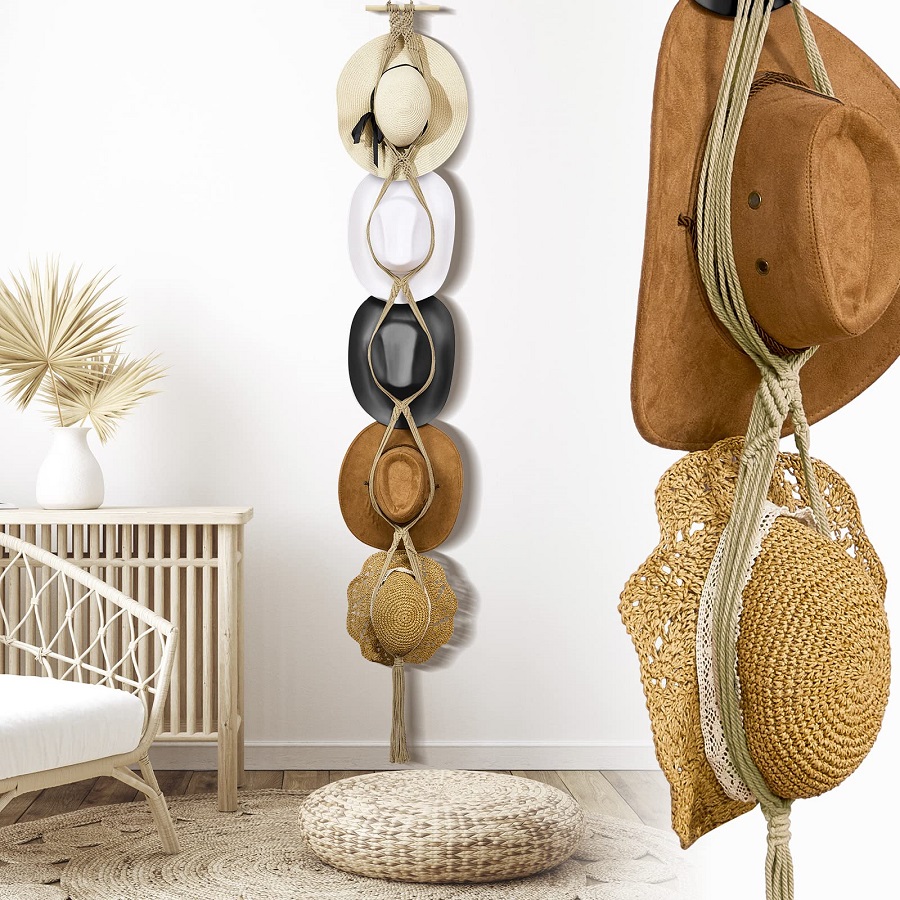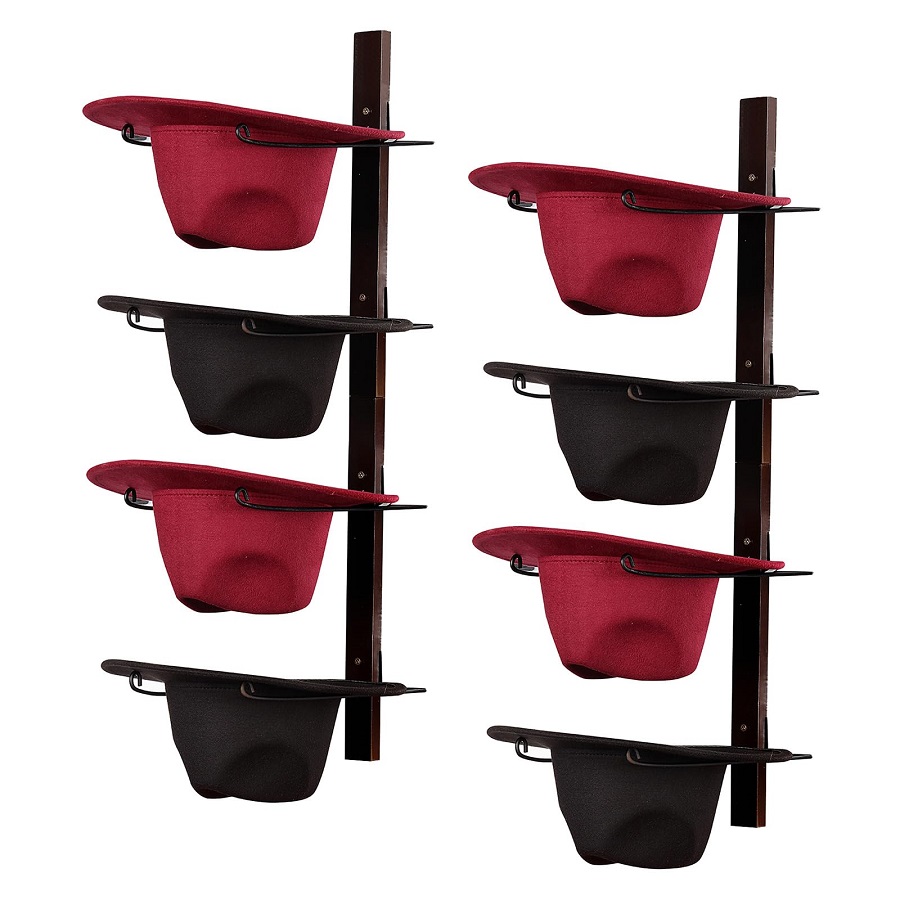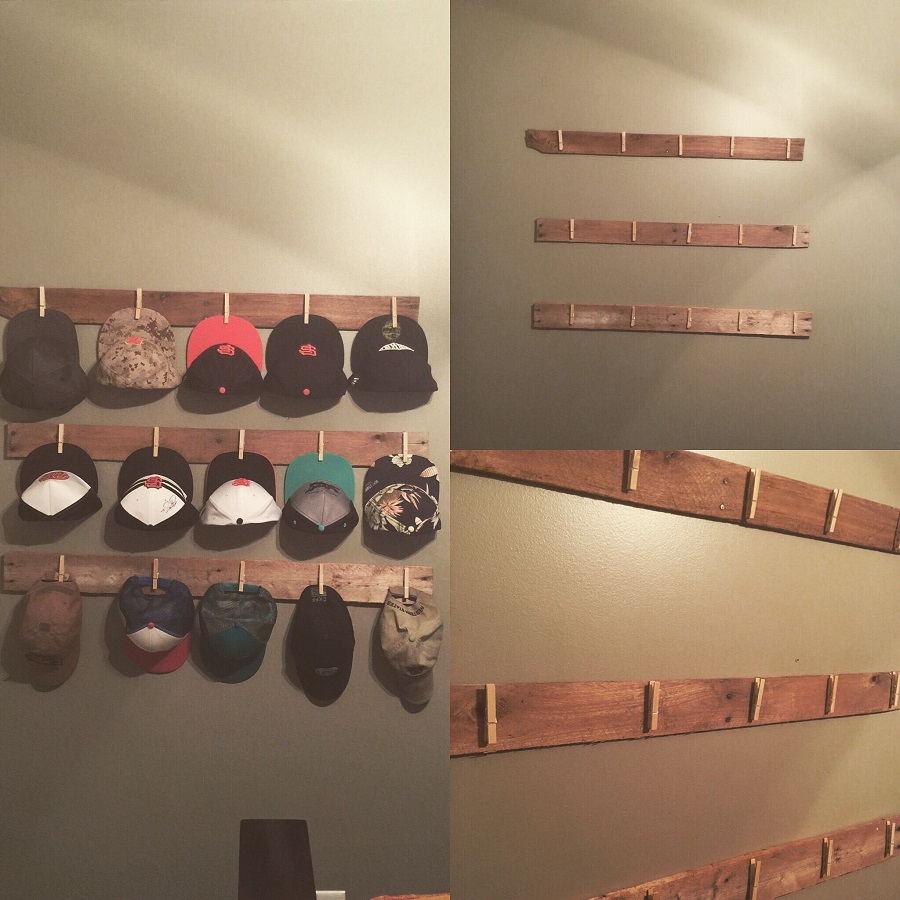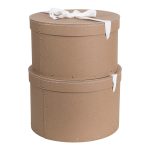Introduction to DIY Hat Hanger Construction
Creating a DIY hat hanger is both functional and rewarding. This project lets you customize your hanger. You can choose the wood type, finish, and size that fit your needs. Building a hat hanger requires basic woodworking skills. If you are new to woodworking, don’t worry. The process is simple and the steps are easy to follow.
First, we gather the necessary materials and tools. The right wood and proper tools make the job easier and ensure a quality finish. As we go through each step, I’ll guide you on cutting, leveling, and finishing the wood. You will learn to make precise cuts, level for stability, and drill perfect holes for your hats.
We will also cover advanced techniques like filleting corners and installing a keyhole for mounting. These touches add to the durability and appeal of your hat hanger. With patience and attention to detail, you will craft a beautiful, lasting piece.
So, if you’re ready to take on this DIY challenge, let’s get started on your very own diy hat hanger. It’s a great way to spend an afternoon, and you’ll have something practical and stylish to show for it.
Necessary Materials and Tools
Before diving into the construction of your diy hat hanger, it’s crucial to have all the necessary materials and tools at hand. This ensures a smooth process and results in a well-crafted final product. Here’s what you’ll need to get started:
Types of Wood Suitable for Hat Hangers
The wood you choose is the foundation of your hat hanger. Opt for wood that is durable and can hold up the weight of multiple hats. Woods like pine, cedar, and oak are excellent choices. They are strong, easy to work with, and have a pleasant appearance. Remember, the size of your wood should be 24 inches long with 90-degree corners for a sleek, professional look.
Essential Tools for Cutting and Shaping
Precision and safety are key when cutting and shaping wood. You’ll need a reliable saw, such as a bandsaw, for cutting notches and a drill press with a 1-inch bit for the holes. A jointer will help you level the wood, while a table router and keyhole router will assist in filleting corners and creating a keyhole for mounting, respectively. Don’t forget sandpaper in varying grits – 120, 180, and 220 – to smooth out all surfaces. Having these tools ready will ensure that each step of your diy hat hanger project is executed with precision.
Step-by-Step Guide to Cutting Your Wood
Achieving precision in your diy hat hanger begins with cutting your wood correctly. This step is vital for the structural integrity and overall look of your hat hanger. Below, we’ll go through the process of measuring, marking, and cutting the wood with precision.
Measuring and Marking the Wood
Start by measuring your chosen wood. Remember, it needs to be 24 inches long with 90-degree corners. Use a reliable tape measure and a straight edge to mark clear, accurate lines. These guide your cuts and ensure your hat hanger has the right dimensions.
Once measured, mark the exact points for cutting. Use a pencil for visible lines. Measure twice to avoid any errors. Correct measurements lead to precise cuts, which are essential for the next step.
Cutting Techniques for Precision
With your wood marked, move to cutting. Use a high-quality saw, ensuring it’s sharp and set to the correct angle. Make straight, controlled cuts along your marked lines. A steady hand is crucial. Keep cuts smooth to reduce later sanding.
For internal cuts, like the holes for the hats, ensure your drill press is set up with a 1-inch bit. Measure the center points accurately, 2 inches from the edge and 1 inch down from the long edge. The distance between the holes should be 4 inches. Precision in setting up the drill press stop ensures uniformity in your hole sizes.
Proper cutting techniques will not only make your diy hat hanger look professional but also make it safer to use. Next, we’ll move on to leveling the wood for utmost stability.
 Levelling Your Wood for Stability
Levelling Your Wood for Stability
Achieving a stable base is crucial for your diy hat hanger. Here’s how to ensure your wood is perfectly level.
Using a Jointer for Even Surfaces
Start by using a jointer on your wood. This tool helps create flat, even surfaces. Place the wood on the jointer’s flat surface. Gently push it across the blades. Keep the pressure consistent to avoid unevenness.
Ensuring Flatness and Stability Tests
After jointing, place your wood on a flat surface to check for wobbles. If it rocks or wobbles, it needs more jointing. Stability is key, so take your time to get it right. Repeat the process until the wood does not wobble.
Creative Hole Cutting for Hat Placement
Creating the perfect diy hat hanger involves precise hole cutting. Hats need to hang without slipping. Follow these steps for clean and consistent holes.
Tools and Settings for Perfect Holes
To start, you’ll want a drill press with a 1-inch bit. The 1-inch size is ideal for most hat sizes. Before drilling, make sure to secure a stop on the drill press. This ensures all holes are cut to the same depth each time. Double-check the drill bit is sharp for clean cuts.
Positioning and Spacing of Holes
Position and spacing are key. Place your board on your work surface. Measure 2 inches from the edge and mark the center of your first hole. Ensure it’s 1 inch from the long edge of the board. For multiple hats, space hole centers 4 inches apart. This spacing allows hats to hang neatly without crowding. Mark each center point clearly before drilling. Accurate measurement and positioning make for a tidy, functional diy hat hanger.
Notching Techniques for Enhanced Functionality
Adding notches to your diy hat hanger increases its functionality significantly. Notches allow the hanger to securely support hats without them slipping off. Below are the steps to plan and cut notches effectively.
Planning and Cutting Notches
Begin by identifying where the notches will go. Use the holes as your starting point. Draw tangent lines to each circle where the brim of a hat would rest, ensuring they are perpendicular to the long edge of the wood. This provides a clear path for cutting. Mark another line one centimeter towards the center from each tangent line. This extra space allows for a snug fit for the hats. With the notches clearly marked, proceed to cut them out. A bandsaw is the preferred tool for this task. It gives you control and precision. Guide the wood slowly along the marked lines. Be deliberate with your movements to maintain accuracy.
Finishing Edges Around Notches
Once the notches are cut, it’s important to finish the edges. Clean edges help in preventing damage to hats and to users. Begin with sanding the freshly cut notches. Use 120-grit sandpaper to remove roughness, then progress to 180-grit, and finally 220-grit for a smooth finish. This gradual process removes imperfections and prepares the wood for sealing. If you have a router, gently round out the edges of each notch. This softens the edge and adds a refined look to your diy hat hanger. Lastly, wipe down the area with a tack cloth. This ensures all sawdust and debris are cleared before applying finish.
Having followed these steps, your diy hat hanger will now have enhanced functionality. The notches are well-positioned and cleanly cut for hats to hang beautifully. Next, we will look at filleting corners for aesthetic appeal.
Filleting Corners for Aesthetic Appeal
Achieving a smooth and appealing finish on your diy hat hanger involves filleting the corners. This step adds a professional touch and enhances the overall aesthetic of your project. It’s about rounding the edges to make them soft to the touch and visually appealing. Here’s how to choose the right tools and apply the proper techniques for effective filleting.
Choosing the Right Router and Bit
Selecting the appropriate router and bit is crucial for successful filleting. Opt for a table router, widely recognized for its precision in woodworking. Ensure it has variable speed settings to control the bit’s rotation based on wood type. For the bit, choose a round-over bit with a radius that matches the desired curvature of your hat hanger’s edges. Typically, a 1/2-inch radius bit works well for most projects.
Techniques for Smooth Filleting
Once you have the right tools, focus on technique. First, set up the router table according to your specifications, ensuring that the bit height matches the thickness of your wood. Begin by practicing on scrap wood. This step helps you get used to the tool’s feel and the proper feed rate. For the actual filleting, guide the wood slowly and steadily along the router table. Keep your hands steady and apply consistent pressure. Perform multiple passes, adjusting bit depth gradually, to achieve a smooth, rounded edge. Finally, check the smoothness of each filleted corner. If necessary, make slight adjustments and pass the wood through again. With practice and attention to detail, your diy hat hanger will have beautifully filleted corners that are both safe and decorative.
Installing the Keyhole for Mounting
A keyhole cut adds functionality to your diy hat hanger. It allows for secure and easy mounting.
Tools and Methods for Keyhole Cutting
For cutting a keyhole, you’ll need a keyhole router. Mark the spot for your keyhole on the hat hanger. Make sure it’s centered, preventing tilting when hung. Set the router bit to the correct depth. Push the router down, move it up an inch, then back and up again. Use stops to control the router’s movement. This avoids errors in keyhole size.
Precision and Safety Tips
Precision is vital for a key job well done. Double-check your measurements before cutting. Always wear safety gear, including goggles and ear protection. Keep your hands away from the router bit. Secure the wood firmly before you begin routing. Remember, constant attention to detail ensures a safe, accurate cut. Work calmly and steadily to avoid mistakes. With these tips, you’ll create a keyhole that makes mounting your hat hanger a breeze.
 Final Sanding and Finishing Touches
Final Sanding and Finishing Touches
Once you have installed the keyhole on your DIY hat hanger, it’s time for final sanding and finishing touches that will not only enhance the appearance but also protect your creation. This stage is about smoothing any rough spots and applying a layer of protective coating to ensure durability.
Sanding for Smooth Surfaces
Start with 120-grit sandpaper to sand down all surfaces of the hat hanger, including the inside of the notches. Progress to a finer 180-grit sandpaper for a smoother feel and finish with a 220-grit for that polished look. Use a tack cloth after each sanding to wipe away dust.
Ensure you sand with the grain of the wood to prevent scratches. This process prepares your DIY hat hanger for the final protective finish, ensuring a sleek and smooth surface.
Applying Protective Finish
Choose a finish that suits your style and the type of wood of your DIY hat hanger. A water-based polyacrylic protective finish, like Minwax, works well. It’s durable and enhances wood’s natural beauty.
Apply the first coat with a paintbrush, covering all surfaces evenly. Let it dry for 24 hours. After the first coat dries, lightly sand the surface again with 220-grit sandpaper. This helps the next coat adhere better. Wipe with a tack cloth and apply the second coat.
Repeat the sanding and cleaning process before applying the third coat. Three coats will provide ample protection. Let the final coat dry completely before using the hat hanger.
Correctly applied finish protects your DIY hat hanger from wear and moisture. Plus, it brings out the wood’s grain, adding to the charm of your handcrafted piece.


